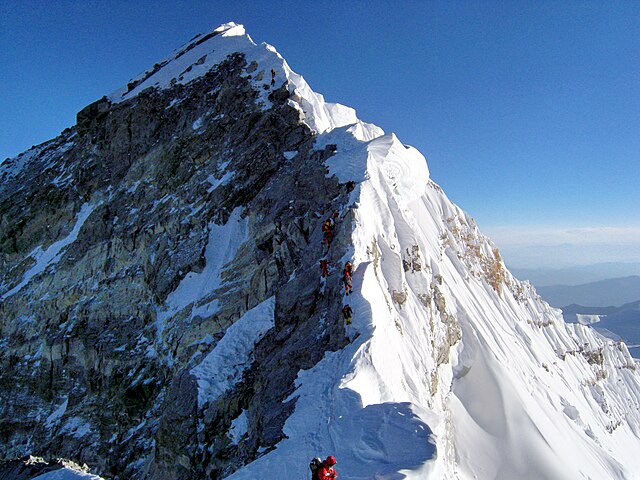The eight-thousanders are the 14 mountains recognised by the International Mountaineering and Climbing Federation (UIAA) as being more than 8,000 metres (26,247 ft) in height above sea level, and sufficiently independent of neighbouring peaks. There is no precise definition of the criteria used to assess independence, and at times, the UIAA has considered whether the list should be expanded to 20 mountain peaks by including the major satellite peaks of eight-thousanders. All of the eight-thousanders are located in the Himalayan and Karakoram mountain ranges in Asia, and their summits lie in an altitude known as the death zone.
Flight over the Khumbu region; six eight-thousanders are visible
Edurne Pasaban, the first woman to climb all 14 after Oh Eun-sun's claim was disputed
Gerlinde Kaltenbrunner, the first woman to climb all 14 without oxygen
No. 1 – Mount Everest
In mountaineering, the death zone refers to altitudes above a certain point where the pressure of oxygen is insufficient to sustain human life for an extended time span. This point is generally tagged as 8,000 m (26,000 ft), where atmospheric pressure is less than 356 millibars. The concept was conceived in 1953 by Edouard Wyss-Dunant, a Swiss doctor, who called it the lethal zone. All 14 peaks above 8000 m in the death zone are located in the Himalaya and Karakoram regions of Asia.
The summit of Mount Everest lies in the death zone.
Bottled oxygen can help mountaineers survive in the death zone






